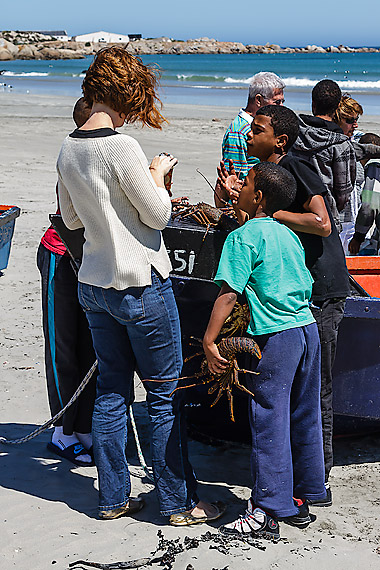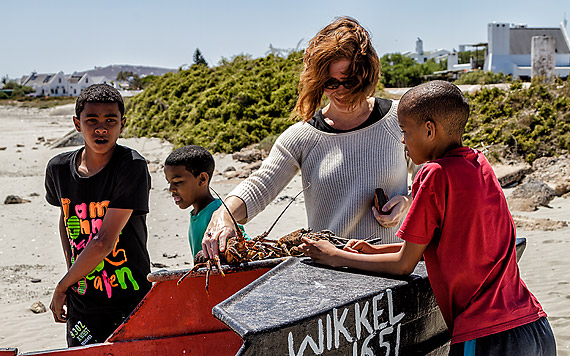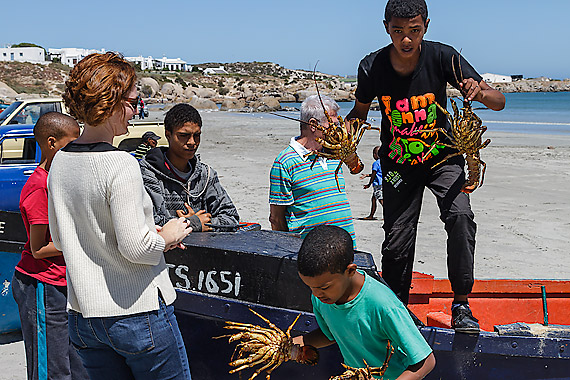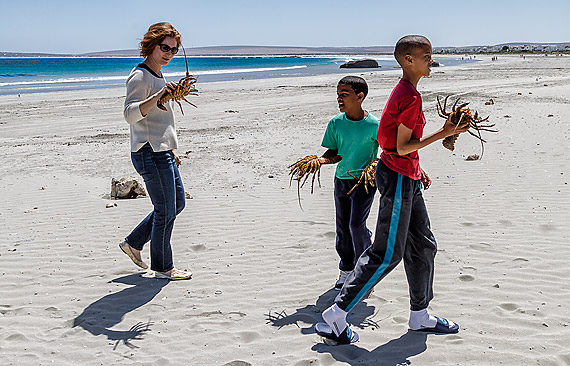A long time ago, the sailing ship I worked on in the Caribbean would stop bi-weekly in the Tobago Cays, St Vincent and the Grenadines.
We avoided Union Island, the largest of nearby inhabited islands, stopped for a day in Mayreau, also inhabited albeit barely, and then sailed next door to the Tobago Cays, isolated and deserted. Our ship would drop anchor in shallow water and we would transfer our daily lunch buffet for a few hundred passengers to the beach, the kitchen team working overtime to move its entire setup back and forth.
On the menu, lobster-s. Lots of them. We bought straight from local fishermen, the same morning. All six hundred kilos of them, if memory serves me well. The locals must have pillaged their reefs for days before our arrival in order to offer us such a catch. One single ship, no matter how beautiful she was, will have had a disastrous impact on the ecosystem with a simple call of a day every other week. I don’t know what the lobster population is today. I hope it recovered.
So I still have mixed feelings about buying lobster on a beach. When in Paternoster recently, Marie settled for four specimens, to feed four people. But seeing a man on every corner of the village with in each hand bags of lobsters – or crayfish, or even kreef in Afrikaans, I have to wonder if Paternoster isn’t going to fall prey to the same greed the Tobago Cays had.
So we parked near the beach and walked towards the colorful boats pulled up high on the sand. It was midday and most adult crews having gone home by now, or so we assumed, kids were in charge of sales and ran towards us, claiming lobsters “as big as an army” in Afrikaans, a sales pitch Marie decided to verify. As I have mentioned before, being rather uncomfortable in such a situation, I was happy to hover around camera in hand and play the investigative reporter. Wuss, says Marie, it’s harder to negotiate lobsters than hostages.
The larger lobsters were still alive, quintessential condition for a purchase, and the price of 60 rands a piece was in line with what we’d heard – and actually about the same as it had been four years earlier. It came up to under USD 7.00 per lobster. She gave them more than they were asking for. A tricky game to play, as one’s wholehearted generosity can be misinterpreted for a common willingness to pay more and trigger an exponential rise in some sellers’ prices while other’s remain flat, causing fights and chaos. I happened to witness this first hand back in the early 90’s in Indonesia, where bicycle-powered touk-touk drivers started arguing loudly after one was given a huge tip that caused the rest to raise their fares instantly.
But the kids were all business and the oldest pocketed the money with the looks of a businessman. I predict he will be leading the family fishing affairs soon. They walked us back to the Landcruiser, helping to carry our goods. We put the poor crustaceans on ice in a cooler and hoped for them to fall asleep forever, just as Rob Hall and Scott Fisher would have done near the top of Everest in 1996. It would seem that after a while in extreme cold, whatever pain might have lingered subsides, the struggle becomes pointless, one stops fighting and slips into peaceful oblivion. Or so they say. Poor lobsters. The climbers, at least, had chosen to be where they were.






Comments
Dreamer
Marie
John
Marie